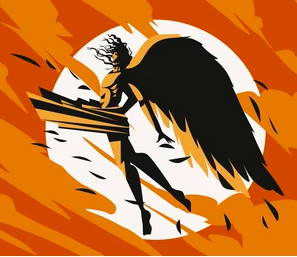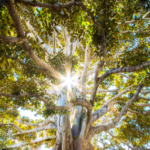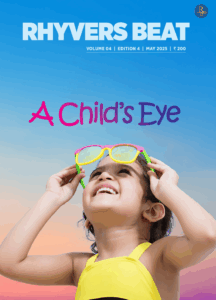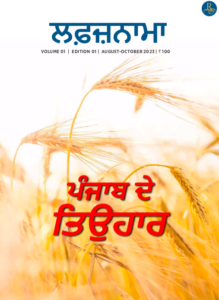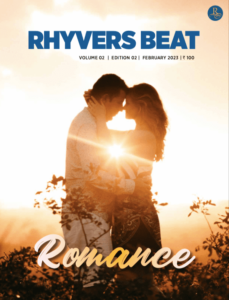Haiku Blossoms (5)
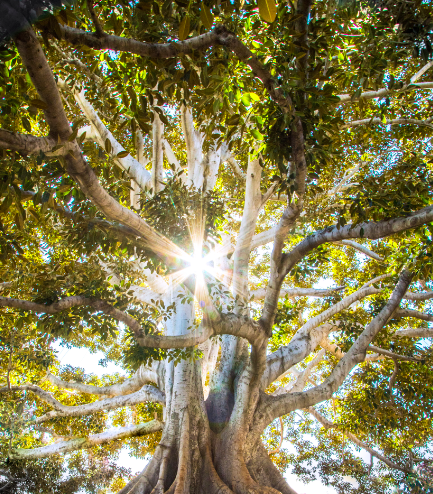
Hope readers are enjoying this column and developing an appreciation of haiku, the minimalist poetry form which originated in Japan and has now spread all over the world.
I fell in love with haiku poetry in 2016 at the age of sixty! This week I share with you some excerpts from my own haiku journey as recounted to Julie Bloss Kelsey, Secretary of The Haiku Foundation. This was published on their blog Troutswirl under their feature “New To Haiku” with the goal of reaching out to welcome beginning haiku poets.
How did you learn about haiku?
Haiku was a mystery to me when I published my first poetry book “Whispers of the Soul —The Journey Within”. Though I did write free verse and 3 lined poems (thinking that these were the traditional 17-syllable haiku), the intricacies of haiku were unknown to me. Then, through divine serendipity, Dr. Angelee Deodhar, a celebrated haiku poet came into my life. We started corresponding and meeting as we lived close by in the same area of Chandigarh city in North India. She shared books, journals, and website links and became my mentor, friend, and “haiku guru” as I used to call her to her wry amusement. She instilled in me a deep fascination for haikai poetry and life became imbued with its beauty. Her passing was a great personal loss as well as a loss to the world of haikai literature.
When I started writing haiku, I adhered to the seventeen-syllable count of 5-7-5; but as I read journals like Frogpond, The Heron’s Nest, Modern Haiku & Presence, I realized that this was the least valid attribute and English haiku needed lesser syllables as they have longer tones than Japanese syllables. The paradox of haiku is that we always suppose we can write them easily, being just 3 -lined, yet it is extremely difficult to write good haiku. Even after my second book “One Breath Poetry” and hundreds of publications in journals, I still feel writing haiku is an ongoing journey, requiring study, practice, and more practice.
Do you have a haiku mentor? What advice did they give you? Did someone else’s haiku greatly influence your own?
I have been fortunate in receiving guidance from many established haiku poets. The first advice I received from Angelee was to “read, study, and write, do not be in a hurry to publish”. I was not even aware of journals, she helped me to submit my work, and later it was Dr. Pravat Kumar Padhy who would give feedback on my haiku and advise me where to submit them. Dr. Pravat mentored me in writing and polishing my haiku, senryu, tanka, tanka prose, and haibun. He is generous in sharing his knowledge of the genre and sent me many well-researched articles and essays on haiku, tanka, and monoku to broaden my understanding. I owe a debt of gratitude to him for his constant motivation and friendly guidance.
Kala Ramesh, through an extensive online Triveni Gurukulam Mentorship Program, Alan Summers through The Haiku Foundation website, and the generous guidance and informal mentoring from Editors of many haiku journals. Interacting with them has added to my learning.
I was greatly influenced by the Masters especially Matsuo Bashō and Kobayashi Issa. As my writing is mostly experiential and close to Nature and Zen, I could connect with their writing. Basho’s “The Narrow Road to the Deep North” is my all-time favorite. A visit to Kyoto, Japan, and initiation into Soka Gakkai Buddhism based on the teachings of the monk Nichiren made me more mindful and attracted me to the minimalistic style of writing poetry.
I have learned much from attending Michael Dylan Welch’s presentation at the Japan Fair. He says that instead of writing about our reactions to stimuli, in a good haiku we should write about those things that cause our reactions. If our haiku take advantage of this technique, our readers can experience the same feelings we felt, without our having to explain them. I find his advice valuable.
There are so many good contemporary haijin whose work I really enjoy reading…tough to mention all. Social media connectivity has made it easy to connect with most of them. It helps to read their work, learn, collaborate and write linked verses, rengay and haiga. The haiku community is wonderful and has gifted me with many new friends from all over the world who inspire me. I greatly value their friendship.
Where do you most often write? Do you have a writing process?
I write wherever and whenever inspiration strikes — it could be in my home, in the garden on my walks, while traveling, or visiting new places, simple observation, reading, playing, walking, eating, bathing, dreaming — it could happen anytime, anywhere. Then I pen it in my diary/ phone whatever is close by before it slips away (at times it does!). I wish I had a daily writing process, but haiku writing doesn’t work as a process for me, it’s more a love for life, nature, and poetry! Yet submissions are process and time driven! Submissions are to be made timely and a record has to be kept. Review and revision are integral steps of haiku writing for me. Even while submitting, sometimes there is an inner call for an edit, and intuition works. I have a beginner’s mind and feel that there is no end to learning.
How do you approach reading haiku?
Reading haiku is almost a daily ritual. Being an avid reader, I love to read books on haiku and have just finished reading R.H. Blyth‘s volume on Zen in English Literature and Oriental Classics — a brilliant and deeply moving book. Now, Poetry and Zen—Letters and Uncollected Writings of R.H. Blyth is by my bedside (gifts from my son). I greatly enjoy surfing the websites of The Haiku ai and American Haiku Archives. Studying R.H. Blyth’s four volumes on the History of Haiku and The Haiku Handbook: How to Write, Share, and Teach Haiku by William J. Higginson further enhanced my understanding. I refer to these volumes often and have read them time and again.
The Haiku Anthology edited by Cor van den Heuvel & Haiku in English: The First Hundred Years edited by Jim Kacian, Philip Rowland, and Allan Burns, both issued from a library in Seattle, inspired and enriched me.
For those just starting out, what advice would you give?
Nowadays, plenty of excellent resources are available on the internet. A beginner needs to study the works of haiku Masters and contemporary poets.
- Jim Kacian’sFirst Thoughts—A Haiku Primeris very instructive and interesting. It covers chapters on the history, definition, form, content, technique, language, and how to write haiku illustrating these with vivid examples of haiku written over the years by poets. I found “How to Haiku” by Bruce Ross very useful too.
- The Haiku Foundation’s site is another valuable resource for all poets and it has golden nuggets for both new and experienced haiku lovers.
- Studying the saijiki (list of kigo—seasonal terms used in haiku and related forms of poetry) is imperative for writing quality haiku.
- Getting to know the names of trees, plants, flowers, and birds one encounters and using them in haiku adds beauty and makes the haiku more concrete.
5. Keeping a journal for haiku: I write the date and an idea/draft of the haiku, also small phrases, words, and sensory images, later these can be used in penning haiku. I use a journal in my study at home and Notes on my phone if I am outside, which I then transfer to my journal.
6. Composing haiku is a path—a way of observing life and catching the ephemeral with brevity. It does not “tell” but “shows” and captures a moment in time. The core of a haiku is the ‘white space” or ma and we are advised to “look closer between the lines, and even between the words”. Here the poet disappears and the reader steps in. - Joining a haiku group, there are many on Facebook and there is our Triveni haikai website with the mission of promoting the enjoyment of haikai and tanka literature and also for creating a common platform for all haikai poets, irrespective of boundaries both physical or imagined.
- Finally, don’t be in a hurry, just enjoy the beauty of haiku, its present moment awareness, and its brevity. Be true to yourself and your voice. Your experience is unique to you and that should reflect in your poetry.
What are your favorite haiku that you have written?
Some of my published haiku:
peeling layers of childhood green mango chutney
Heliosparrow 28th Dec 2020, featured in THF re:Virals on 9th January 2021
*
wooden ladder
on the neighbour’s wall
the moon climbs down
Poetry Pea Podcast Season 4 Episode 6 on 15th March 2021 & Spring Journal. Honorable Mention with commentary.
*
autumn dusk
an old friend’s hand
in mine
The Monthly Kukai of The Haiku Foundation, April 2021 on the theme of trust, 3rd Prize
*
childhood memories . . .
I open and close
the wrought iron gate
The Haiku Foundation, Haiku Dialogue 6th October 2021
Touchstone Awards individual Poems (Short List 2021)
*
sudden rain…
I pick magnolia blossoms
from Buddha’s lap
13th Yamadera Basho Memorial Museum Contest, Haiku of Merit, October 2021
*
rain bath
shedding the dust
a peacock’s cry
The Heron’s Nest, December 2021
*
bird feeder—
a chickadee’s beak
laced with snow
The Haiku Foundation’s Monthly Kukai, January 2022, on the theme of “snow”. Honorable Mention.
*
last train home…
the fishmonger’s basket
filled with potatoes
Frogpond Winter issue, February 2022
*
kite flying…
a street child colors
the unmasked sky
sharpening the green pencil contest Honorable Mention 17th April 2022
*
between two worlds the space of a breath
THF Haiku Dialogue, 29th June 20222, flowers – a death poem, Editor’s Choice
*
long afternoon
a glossy drongo
whoops me out
THF Haiku Dialogue, 3rd August 2022, on alliteration, assonance, consonance, Editor’s Choice
*
Next week I will share some more interesting features of haiku. In English, the term haikai has also come to mean many Japanese poetic forms – senryu, tanka, haibun, rengay, haiga, cherita and some more. We will discuss them going forward.
Till then, let us remain centered in the present moment and pay attention to the natural wonders around us. Wishing you a week filled with magic.
_____________________________________________
Brief Bio:
A Touchstone nominee on the Shortlist for Individual Poems in 2021, Neena Singh’s poetry (haiku, senryu, tanka, rengay, haibun, tanka prose, cherita, haiga) has been featured in prestigious haiku journals. She has published two books of poetry—Whispers of the Soul and One Breath Poetry. She is the Guest Editor of The Wise Owl, an international literary and art E-magazine



